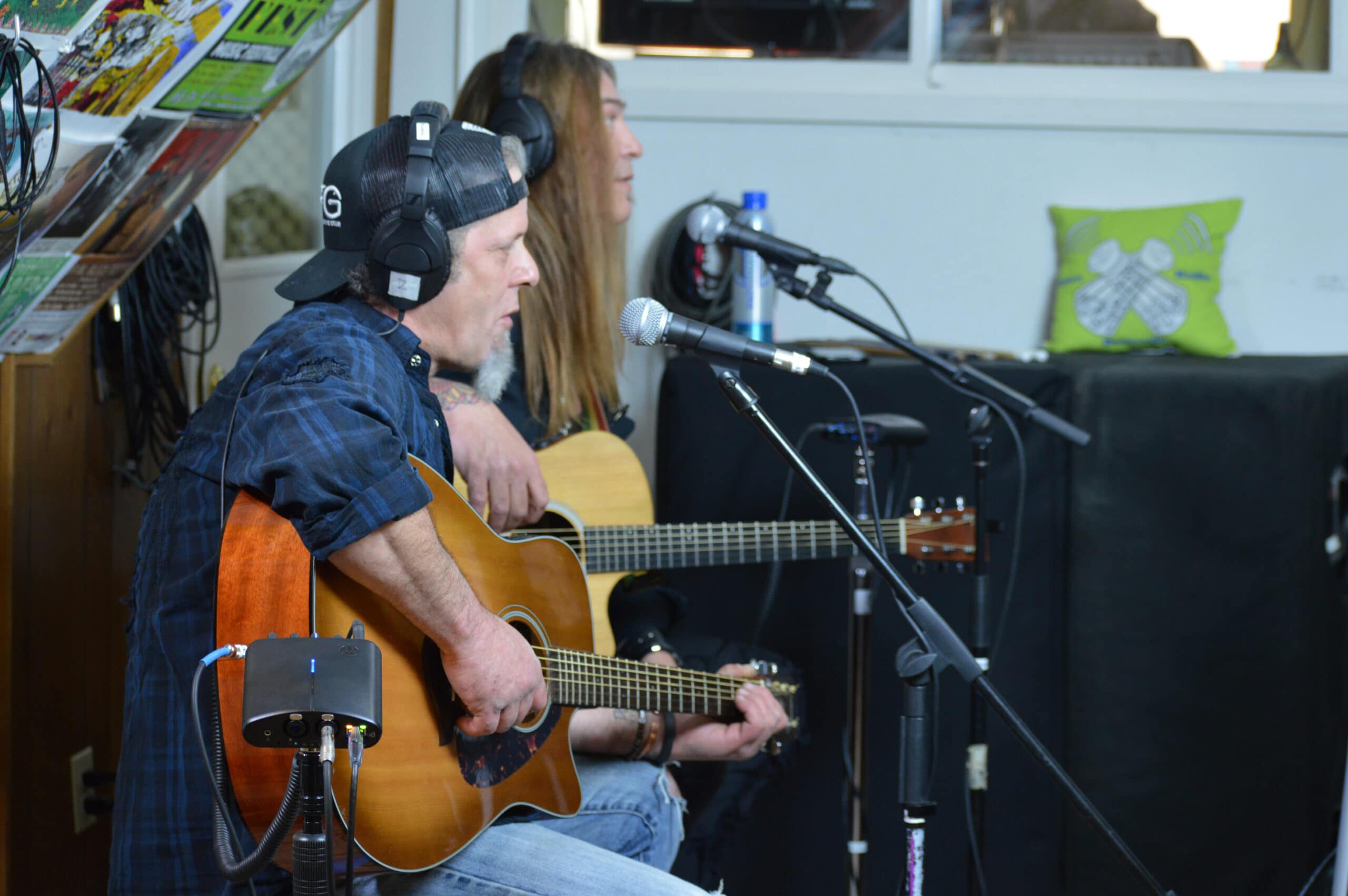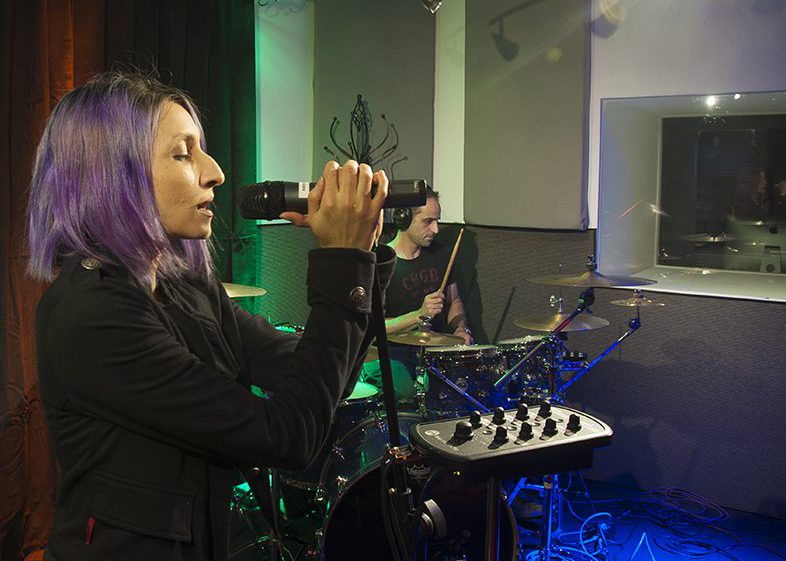When it comes to comparing audio equipment like speakers or headphones, it is difficult to avoid biased opinions from manufacturers and designers, since it is inevitable that each one has formulated its business model based on an individual preference and an ideal concept.
With this in mind, it stands to reason that a company that makes amplifiers, consoles, or mixing systems might have a more neutral perspective about the types of devices that might be used with their equipment, and the various pros and cons of each,
Nason Tackett is the senior design engineer of Hear Technologies. The company has already made a reputation with Tackett’s cutting-edge monitor mixing units and recording interfaces, as well as other audio/video support devices. Hear offers tablet-sized mixing consoles that allow musicians and vocalists to customize their respective headphone mixes for recording in the studio or for live performance. Although small, these consoles can submix up to 128 channels with a frequency response of 20 Hz to 20 kHz and a sampling rate up to 192 kHz.

Nason graciously made time to share some insights about headphones, in-ear monitors (IEMs) and earbuds from the perspective of the company’s musician, producer and engineering clients, as well as looking at the gray zone that separaes audiophile and professional audio equipment.
John Seetoo: Owsley Stanley, best known for his audio R&D involvement with the Grateful Dead and (sound and musical instrument company) Alembic, held a philosophy that hi-fi home audio gear and pro audio gear should have negligible performance differences apart from the durability requirements of pro audio gear. This is an outlook shared by Pat Quilter of QSC Audio (Copper Issues 118, 119 and 120) and John Meyer of Meyer Sound (Copper Issues 99, 100 and 101).
Do you share or differ with this philosophy?
Another question: apart from mixing capabilities, in what ways does your design of the Hear Back mixing units for musicians differ from or are comparable to audiophile headphone DAC/amps?
Nason Tackett: I do share this philosophy. If I am designing equipment that will be used in the creation of music recordings, I want the accuracy to be at least as accurate if not more accurate than what someone will listen to the playback of the recording on, even if [they will be listening on] a very high-end system. You want to hear all the detail [as well as] all the ugly parts as you make the recording. You don’t want to cover them up and then have someone hear them during playback on a [home] hi-fi system.
The headphone monitoring systems that I have designed are very much like audiophile headphone DAC /amps. The goals in designing them were to be accurate, to avoid coloring the sound, and [to be] as low [in] noise as possible. I like to be able to turn up the master volume and have no hiss. Thankfully, I am in a situation where I’m able to design the best piece of gear I can without anyone telling me to cut corners or cut costs. I just do what it takes to make it the best that I can.
I ran my own live sound and recording company for over a decade, so while designing these products I brought my pair of near-field studio monitors in that I was familiar with, and used them to critically listen to every product I made. I trusted my ears as much as what the test equipment was showing me.
JS: While IEMs are the likely default listening platform for musicians using Hear Back PRO monitoring units in a live setting, headphones of all types probably would be deployed when used in the recording studio. Can you discuss a bit about the differences in headphone types that clients have been using, and any advice for optimal use? For example, would someone in the studio using AKG headphones have an easier time than someone using Dr. Dre Beats?
 A Hear Back PRO mixer at Muscle Shoals Sound Studio. Photo by Jessica Coleman.
A Hear Back PRO mixer at Muscle Shoals Sound Studio. Photo by Jessica Coleman.NT: I will refer to headphones and IEMs (in-ear monitors) collectively as “phones.”
We see people using everything! There is no right answer to what someone should use. It depends on your needs. Some people think [that] using something that has a razor-flat frequency response is the right answer, but this is not necessarily true. Everyone’s hearing is different. People have hearing loss in different areas, so what works for one person might not for another. Your brain gets used to equipment [that] you use frequently.
People who spend the money to get a good-quality pair of IEMs molded to their ears often bring these into the studio to record with because they are used to the way they sound. And this makes good sense. If you don’t have phones [that] you are used to, I recommend visiting a trade show or a shop where you can try a lot of different types to [hear] for yourself. You will want to bring a recording that you are very familiar with and see if you can hear everything, especially the things you really need to hear to perform as a musician.
I don’t recommend a majority of the consumer phones because they are designed to listen to mastered recordings where the dynamics are very controlled. When monitoring live music, the dynamics are not as controlled so the phones usually get hit with a lot more energy that will typically damage consumer-grade phones. Consumer phones also tend to have exaggerated low and high frequencies, which may cause a musician to change their tone to compensate and result in a difference between what the musician and the audience hears. However, there are some really nice consumer phones out there that will work just fine in a live environment. It is important to investigate each design individually to find what works best for you.
 Christopher Currie and Bruce Krombholtz using Switch Back M8RX monitoring interfaces at Spice Radio in Huntsville, Alabama. Photo courtesy of Spice Radio.
Christopher Currie and Bruce Krombholtz using Switch Back M8RX monitoring interfaces at Spice Radio in Huntsville, Alabama. Photo courtesy of Spice Radio.
JS: Would there be a way for an engineer or musician to use open-backed headphones or even electrostatic headphones during studio sessions? NT: It really depends on the application. In a studio, if they are in an area that is not very noisy and there are no microphones that could pick up the sound of the headphones, then someone could use open-backed or electrostatic headphones. These are good if someone wants to monitor audio but still be able to hear someone talking to them. They just don’t work if you need to block out room noise or if there are microphones that might pick up sound coming from the headphones. I have a pair of open-back headphones I love to use while designing and testing, but the room I [use them] in is not noisy. My co-workers do get to listen to whatever is in my phones, though. JS: Hear Technologies has chosen Future Sonics as its preferred IEM supplier, and has stated a preference for their dynamic driver design over balanced armature-based technology (where an armature is balanced between two magnets and is connected to a diaphragm that produces sound). Can you please elaborate on the pros and cons between the two platforms, and in which circumstances, if any, would balanced-armature technology be preferable?



